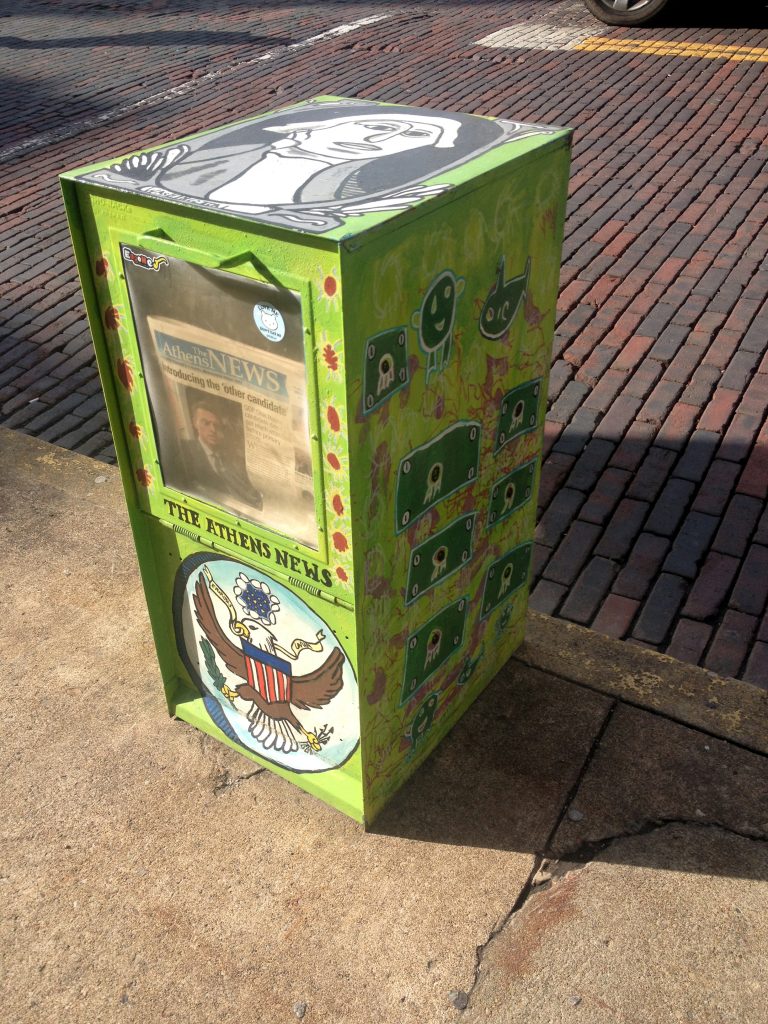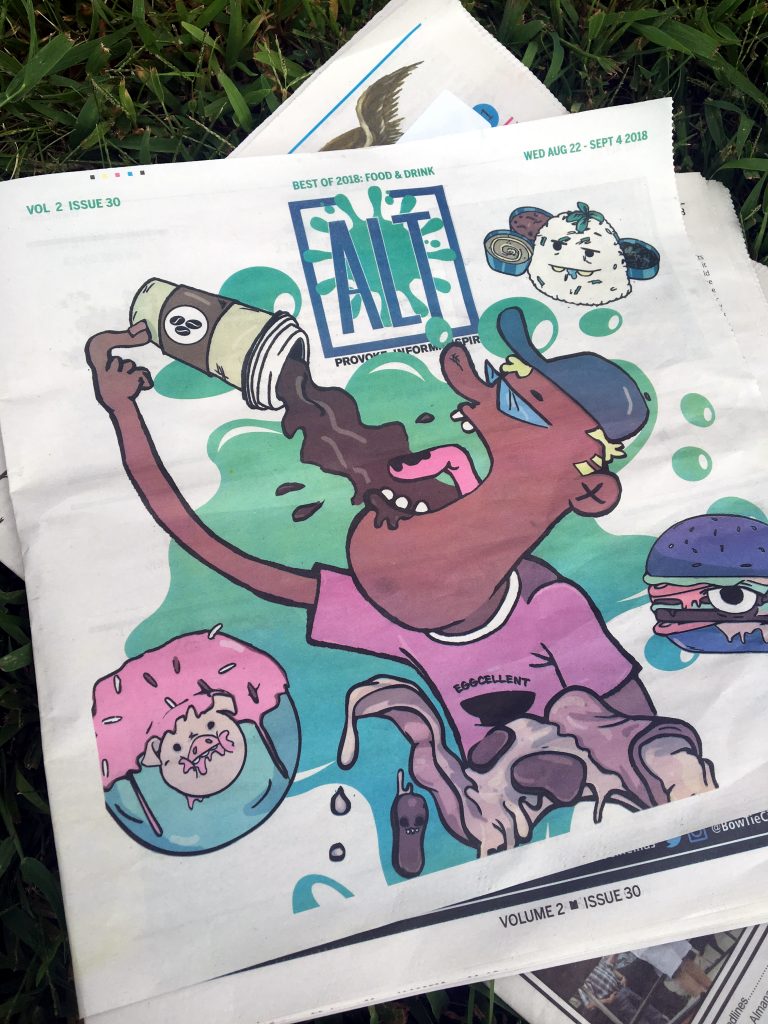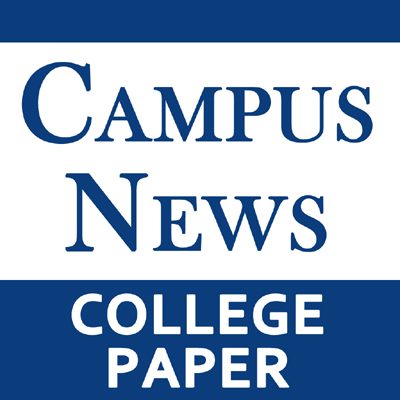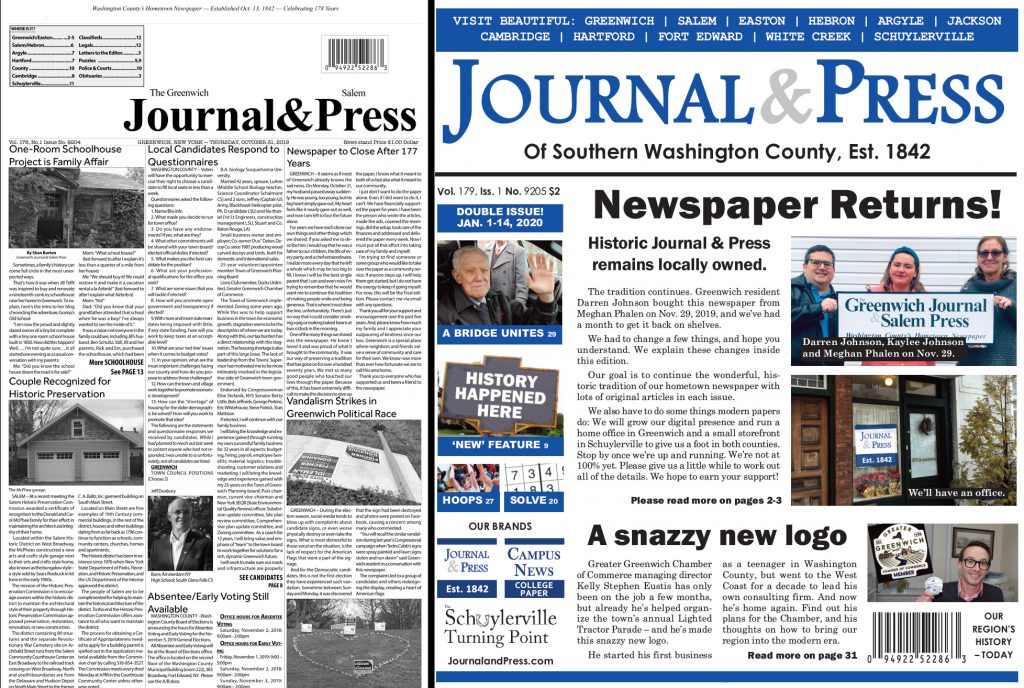
By Darren Johnson
Campus News
My relatively old GPS conked out without my noticing while traveling through West Virginia on my way to the Future of Student Media Summit at Ohio University last month, and I ended up missing my exit, driving through rusting towns that, like my GPS, need an update.
When I finally got to the conference, I realized my old Lenovo computer couldn’t hook into their AV system. My machine didn’t have a modern port. I had to borrow some student’s MacBook to play my PowerPoint.
These examples of obsolete technology wore on me a bit, as I was to set up a table for Campus News, which, as you know, is a – gasp! – printed newspaper.
I go to a good number of conferences – usually populated by professors and college administrators closer to middle age than traditional student age – and have been browbeaten over the years, showing up with my printed newspapers.
Like the middle-age person in a new convertible, blasting Kanye and wearing skinny jeans, these people wanted nothing to do with my old-school printed newspapers. They were hash-tagging (to whom, no one knows). All of the breakout sessions were about social media and reaching the “unreachable” student. My little table full of newspapers would get ignored at such conferences, as these folks wouldn’t even make eye contact. They’d instead visit the tables with slick people selling “likes” on Facebook and whatever. I may as well be a leper.
So, I went into Ohio University thinking I was done. Walter White giving one last, longing look at his lab before keeling over. John Wayne as “The Shootist” getting into one last gun battle. That would be that. #OUTOFDATE.
And at first, me at my table full of newspapers, the older journalism professors there ignored me. They did the usual avoiding of eye contact. I didn’t fit the narrative that they tell students – that print is dead (but they don’t tell them how to actually find a job of the same caliber as a print journalism job).
But then the students came out of a seminar – scores of them. And they all stopped by my table, took samples. They all cared about the printed paper. They wanted their paper to be vibrant. They like printed papers, they said.
They ignored the guy trying to sell a new hashtag service at the table across from me. He’d flown in from Florida and didn’t make a single sale. He tried a look where he was wearing sneakers with skinny jeans and a jacket with patches on the elbows.
The person organizing the conference was a younger fellow, about the same age as the students. He likes the fact that Campus News is growing, and how we have this crazy distribution model. So I was asked to speak on circulation. The talk was very well attended.
They liked that I tied in the idea of making a newspaper with the various artisan movements that are popular with younger adults. People will pick up something if it looks like it has some local craftsmanship to it. Meanwhile, the generic USA Todays in my motel lobby went untouched.
None of the students cared that my old laptop didn’t work, or that I still use the iPhone 4s. The middle-age decision-makers have students pegged completely wrong. They don’t care if you’re trendy or not. They just want you to be you.
Eventually, the professors started coming by my table, too. They admitted that web journalism hasn’t really been all that great at the college level; there’s no way to really pay the bills with it, as web ads only offer pennies on the dollar. Too, it’s easier for students to ignore some web site.
The keynote address at the Summit gave us some great stats from a joint study conducted by Borrell Associates and the College Media Association: Students reported still enjoying their print papers and advertisers said that student media was an important part of their marketing plans.
So, I left the conference heartened that, yes, print newspapers can have an audience, and it’s a younger audience than what the naysayers would have us think.
Yes, go ahead, write that hashtag that two or three people will glimpse at and quickly ignore. It may be the future, but not yet.
Driving back – from a device the size of a matchbook containing an infinity of songs – I put on the late John Denver’s “Take Me Home, Country Roads.” It felt appropriate for leaving West Virginia.
“Life is old there, older than the trees, younger than the mountains, blowing like a breeze.”
It’s the message that can be timeless, not young or old or middle aged. The medium doesn’t really matter.
And that’s the last word … for now.
Darren Johnson, Campus News publisher, has a Master of Fine Arts degree in Writing and Literature from Southampton College and is working on a novel. To learn more about Campus News, contact editor@cccn.us.






Facebook Comments